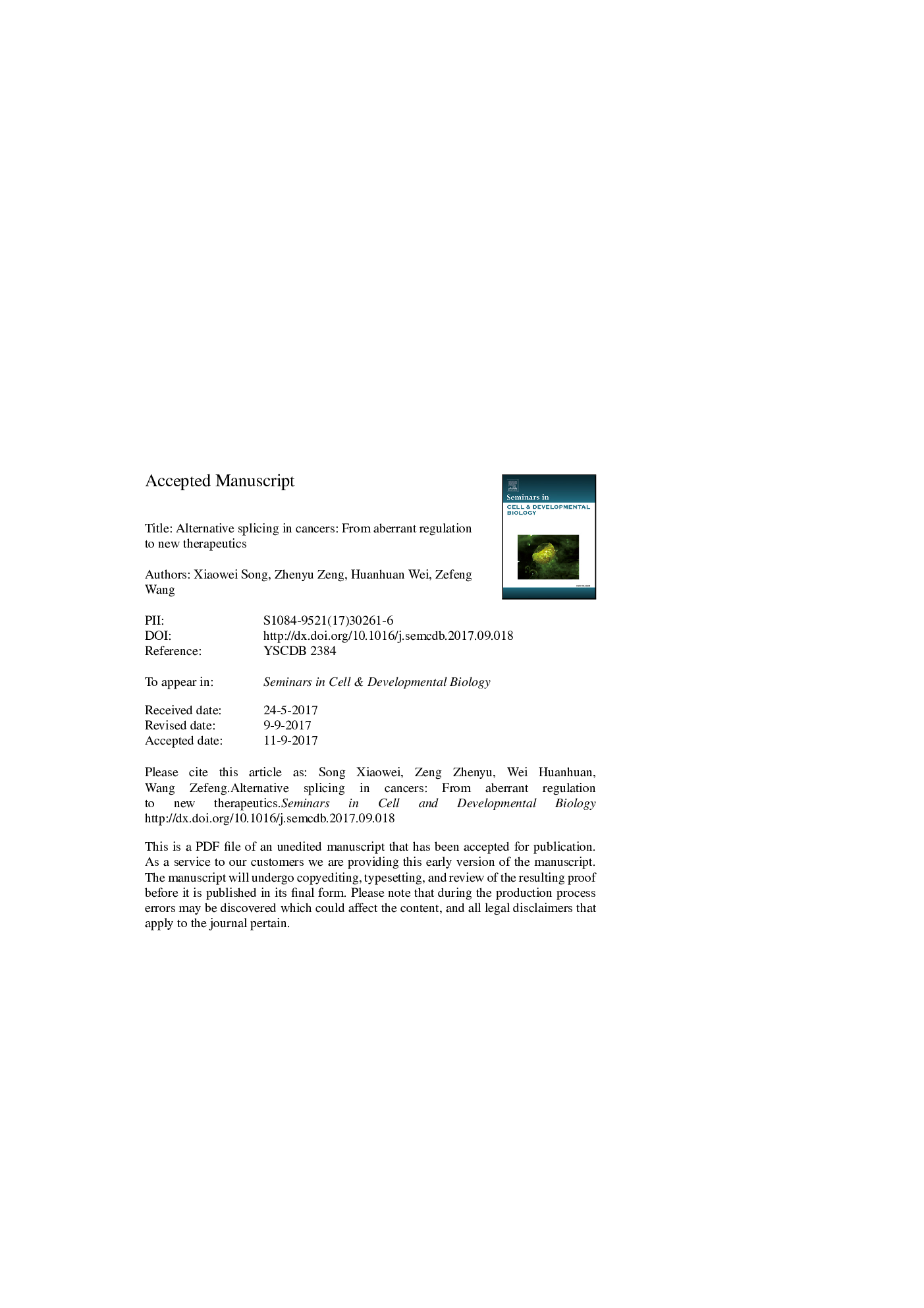| Article ID | Journal | Published Year | Pages | File Type |
|---|---|---|---|---|
| 8479731 | Seminars in Cell & Developmental Biology | 2018 | 25 Pages |
Abstract
Alternative splicing is one of the most common mechanisms for gene regulation in humans, and plays a vital role to increase the complexity of functional proteins. In this article, we seek to provide a general review on the relationships between alternative splicing and tumorigenesis. We briefly introduce the basic rules for regulation of alternative splicing, and discuss recent advances on dynamic regulation of alternative splicing in cancers by highlighting the roles of a variety of RNA splicing factors in tumorigenesis. We further discuss several important questions regarding the splicing of long noncoding RNAs and back-splicing of circular RNAs in cancers. Finally, we discuss the current technologies that can be used to manipulate alternative splicing and serve as potential cancer treatment.
Related Topics
Life Sciences
Biochemistry, Genetics and Molecular Biology
Cell Biology
Authors
Xiaowei Song, Zhenyu Zeng, Huanhuan Wei, Zefeng Wang,
